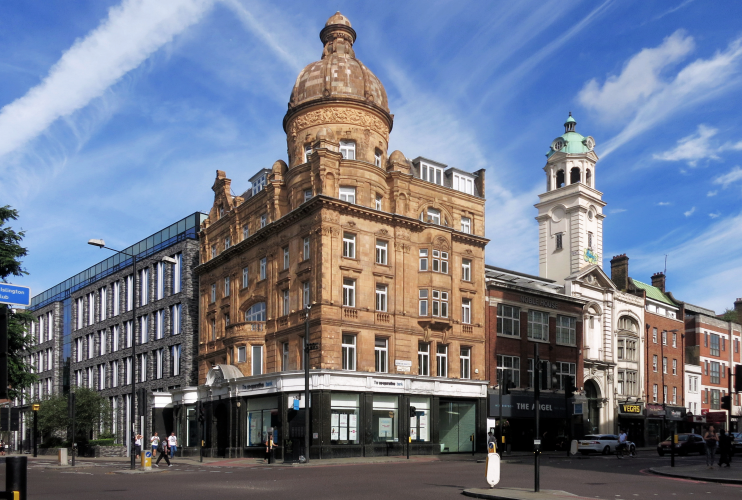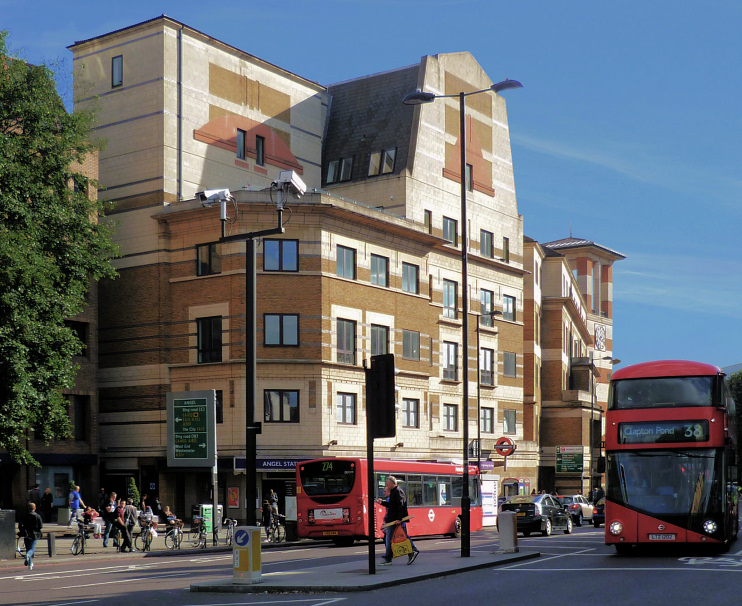Angel, Islington
The Angel, Islington
A commercial quarter and busy road junction at the southern end of Islington High Street, best known to non-Londoners for its place on the Monopoly board

Goswell Road follows a Saxon route out of the City, and the Romans are also believed to have built a road through here. A tavern may have been established as early as the 13th century, with a sign showing the Angel of the Annunciation with the Virgin Mary. However, the first public house that definitely stood here was the Sheepcote in 1614 and the first confirmed use of the Angel name came when this house was rebuilt in 1638.
The Angel was a coaching inn with a galleried yard, offering entertainment by groups of travelling actors and players. It was popular with overnight guests who were travelling to the City but did not want to risk highway robbery on the hazardous last stretch of their journey. Following the creation of what became City Road in 1761 a turnpike was set up at the Angel; it was moved eastward in 1800.
The galleried inn was demolished in 1819 and rebuilt the following year. The Angel was rebuilt yet again at the turn of the 20th century, this time in Flemish style by the architects Frederick Eedle and Sydney Meyers, who were established public house specialists.

Angel tube station opened in 1901, by which time the surrounding area had become very run-down. Slum clearance after the Second World War brought some improvement. In recent decades the construction of commercial and apartment complexes has transformed much of the vicinity.
A branch of the Co-operative Bank occupies the ground floor of the former inn, but Wetherspoon’s Angel is right next door. The pub’s northern neighbour is a Starbucks that occupies the surviving section of the Angel picture theatre (1913). Its campanile-style tower (which has been converted to residential use) is visible on the right of the photograph at the top of the page.
Across the road, the reconstructed tube station is now part of the postmodern Angel Square complex, built in 1987–91. Although Angel Square was never much liked by Islingtonians, a proposal to ‘reimagine’ it as ‘a piece of exemplar architectural and sustainable design’ was widely criticised, and campaign group the Twentieth Century Society formally objected. The proposal envisaged the complete removal of the brick and stone façade and all decorative elements, while retaining the reinforced concrete structure of the existing building. Islington Council’s planning committee granted permission for the project in September 2022, and work is expected to start on the site in 2023.
Inspired by the French Revolution, the republican Thomas Paine probably wrote the first part of The Rights of Man while staying at the Angel in 1790, although some have suggested that he was at the Old Red Lion.
Waddington’s brought fame to the Angel by including it in the British version of the Monopoly board game, which the company first produced in 1935.
